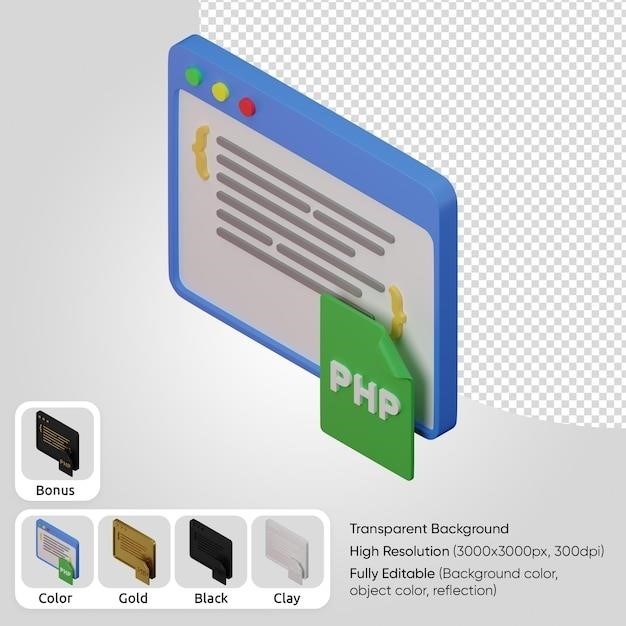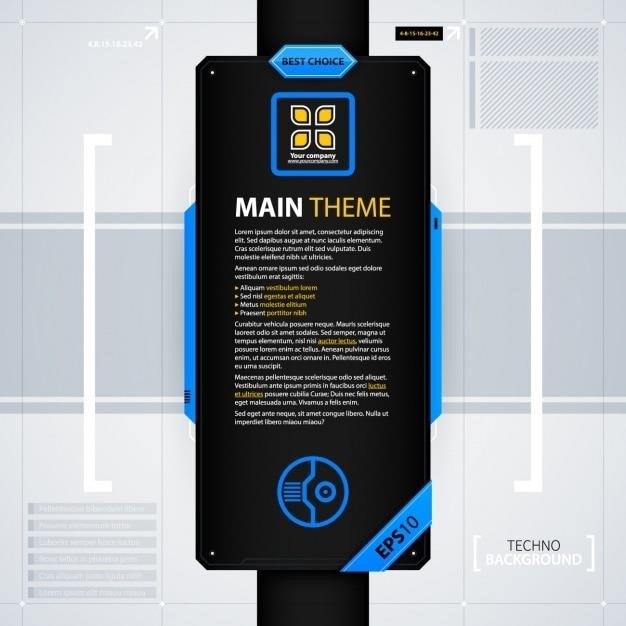The Rose That Grew From Concrete⁚ A Literary Analysis
This analysis delves into Tupac Shakur’s powerful poem, “The Rose That Grew From Concrete,” exploring its enduring impact and multifaceted interpretations. The poem’s symbolic richness and poignant message of hope continue to resonate with readers worldwide.
Tupac Shakur, a name synonymous with raw talent, social commentary, and untimely demise, remains a potent figure in hip-hop and popular culture. His artistry transcended music, encompassing poetry, acting, and activism. Shakur’s work often grappled with complex themes of poverty, racism, and societal injustice, reflecting the realities of urban life and the struggles of marginalized communities. His ability to connect with audiences on an emotional level, conveying both vulnerability and strength, cemented his status as a cultural icon. “The Rose That Grew From Concrete,” a short yet impactful poem, exemplifies Shakur’s poetic prowess and his profound understanding of the human spirit’s resilience. This poem, often circulated as a PDF online, encapsulates his legacy by showcasing his ability to convey profound messages with concise, impactful language. The simplicity of the poem belies its complexity, inviting multiple interpretations and fostering ongoing discussions about its meaning and relevance. Its enduring popularity underscores the timelessness of its central themes and its capacity to inspire hope amidst adversity. This analysis will explore the poem’s central metaphor, its symbolic language, and its lasting impact on readers and listeners.
II. The Poem’s Central Metaphor⁚ The Rose and Concrete

The core of “The Rose That Grew From Concrete” lies in its stark yet beautiful juxtaposition of the rose and the concrete. The rose, a symbol of fragility, beauty, and delicate grace, is unexpectedly situated within the harsh, unforgiving environment of concrete. Concrete, often associated with urban decay, hardship, and societal constraints, represents the challenges and obstacles faced by individuals, particularly those from marginalized backgrounds. The poem’s central metaphor, therefore, is one of unexpected resilience and triumph over adversity; The rose’s ability to not only survive but thrive in such an inhospitable environment speaks volumes about the strength of the human spirit and the capacity for growth even in the face of seemingly insurmountable obstacles. This powerful image underscores the poem’s message of hope and perseverance, highlighting the ability of individuals to flourish even within the most difficult circumstances. The contrast between the delicate beauty of the rose and the rugged texture of the concrete creates a powerful visual image that lingers long after the poem is read, emphasizing the unexpected beauty and strength found in unexpected places. The image itself acts as a powerful symbol of hope and resilience in the face of adversity.
III. Symbolism and Imagery
Tupac Shakur masterfully employs symbolism and imagery to convey the poem’s profound message. The poem’s imagery is strikingly visual, painting a vivid picture of urban landscapes and the harsh realities faced by many. The concrete itself isn’t merely a setting; it embodies systemic oppression, societal barriers, and the challenges of poverty and hardship. The stark contrast between the concrete’s harsh texture and the rose’s delicate petals creates a powerful visual metaphor. The rose, however, transcends its delicate nature, becoming a potent symbol of resilience, hope, and the indomitable human spirit. Its ability to flourish amidst the concrete underscores the power of perseverance and the capacity for beauty to emerge even from the most desolate environments. The poem’s imagery is not merely descriptive; it’s deeply evocative, stirring emotions and prompting reflection on themes of struggle, survival, and the transformative power of hope. The carefully chosen words create a lasting impression on the reader, leaving them to ponder the multifaceted nature of the poem’s central message.
III.A. The Rose⁚ Resilience and Beauty
The rose in “The Rose That Grew From Concrete” is far more than a simple flower; it serves as a potent symbol of resilience, defying the limitations imposed by its harsh environment. Its delicate beauty stands in stark contrast to the unforgiving concrete, yet it persists, thriving against all odds. This symbolizes the strength of the human spirit, the ability to find beauty and hope even in the face of adversity. The rose’s survival represents the triumph of the human will, a testament to the enduring power of hope and perseverance. It speaks to the potential for growth and beauty to emerge from seemingly impossible circumstances. The image of the rose blooming in such an unlikely place is deeply moving, embodying the strength and tenacity found in individuals who overcome challenges. It is a symbol of inner strength, a reminder that even amidst hardship, beauty and hope can flourish. The rose’s existence is a powerful testament to the indomitable spirit of the human heart.
III.B. The Concrete⁚ Hardship and Adversity
The concrete in Tupac Shakur’s poem functions as a powerful symbol of hardship, adversity, and the oppressive environment often faced by marginalized communities. Its stark, unyielding nature represents the challenges and obstacles that can hinder growth and stifle potential. The concrete’s cold, hard surface embodies systemic barriers, societal inequalities, and the struggles of those living in impoverished or disadvantaged circumstances. It symbolizes the limitations imposed by poverty, violence, and lack of opportunity. The imagery of the concrete is deliberately harsh, reflecting the difficult realities faced by many. It’s not simply a physical environment but a representation of systemic oppression and the fight for survival within it. The juxtaposition of the delicate rose against the unforgiving concrete highlights the remarkable resilience required to overcome such adversity. The concrete, therefore, serves as a crucial element in shaping the poem’s overall message of hope and perseverance, emphasizing the extraordinary nature of the rose’s survival.
IV. Themes of Perseverance and Hope
At its core, “The Rose That Grew From Concrete” is a testament to the enduring human spirit and the power of perseverance. The poem’s central theme revolves around the ability to overcome seemingly insurmountable obstacles and find hope even in the direst of circumstances. The rose, thriving amidst the harsh environment of the concrete, embodies the strength and resilience of individuals who refuse to be defeated by adversity. The poem suggests that hope is not merely a passive sentiment but an active force, a driving power that fuels the struggle for survival and betterment. This message resonates deeply with audiences who have experienced hardship and challenges, offering inspiration and encouragement. The image of the rose breaking through the concrete serves as a symbol of triumph over adversity, emphasizing the possibility of growth and beauty even in the face of seemingly insurmountable obstacles. This theme of perseverance and hope is woven throughout the poem, providing a powerful and uplifting message for readers.
V. Social Commentary and Urban Reality
Beyond its inspirational message, “The Rose That Grew From Concrete” offers a poignant commentary on the social realities of urban life, particularly within marginalized communities. The concrete itself becomes a potent symbol of the harsh environment and systemic challenges faced by many individuals. It represents the limitations, hardships, and obstacles—poverty, violence, lack of opportunity—that often hinder growth and potential. The rose, pushing through this unforgiving landscape, symbolizes the indomitable spirit of those who strive for self-improvement and a better future despite overwhelming odds. The poem implicitly critiques societal structures that contribute to these adversities, while simultaneously celebrating the resilience and strength of those who find ways to flourish within such contexts. Shakur’s poem serves as a powerful reflection on the struggles and triumphs of individuals navigating challenging urban environments, highlighting the importance of hope and perseverance in the face of adversity. The stark contrast between the delicate rose and the unforgiving concrete underscores the poem’s social commentary.

VI. The Power of the Human Spirit
At its core, “The Rose That Grew From Concrete” is a testament to the extraordinary power of the human spirit. The poem transcends its literal imagery to become a profound metaphor for the capacity of individuals to overcome adversity and achieve remarkable things, even in the face of seemingly insurmountable obstacles. The rose, fragile yet persistent, represents the unwavering strength and resilience inherent in the human condition. Its ability to thrive in an environment designed to stifle growth underscores the innate human drive to overcome challenges and strive for a better life. This enduring spirit, capable of blooming even in the harshest conditions, is the central theme of the poem. It speaks to the universal human experience of facing difficulties and the remarkable ability to find strength and hope amidst hardship. The poem is a powerful reminder that the human spirit is capable of extraordinary feats of perseverance and that hope can flourish even in the most challenging circumstances. This message of enduring hope and resilience resonates deeply with readers.
VII. Interpretations and Diverse Perspectives
The beauty of “The Rose That Grew From Concrete” lies in its open-ended nature, allowing for a multitude of interpretations. Readers from diverse backgrounds and experiences can connect with the poem on a personal level, finding meaning within its evocative imagery and symbolic language. Some might view the rose as a representation of individual resilience in the face of societal challenges, highlighting themes of overcoming poverty and systemic oppression. Others may focus on the spiritual aspects of the poem, interpreting the rose as a symbol of faith and hope amidst adversity. The poem’s simplicity allows for a broad range of interpretations, making it accessible and relatable to a wide audience. The lack of explicit narrative allows readers to project their own experiences and perspectives onto the text, enriching its meaning and fostering a sense of personal connection; This inherent ambiguity is a strength, contributing to the poem’s enduring appeal and its capacity to spark meaningful discussions and diverse interpretations across different cultural and societal contexts. The poem’s power lies in its ability to resonate with individual experiences, making it a truly universal piece of art.
VIII. The Poem’s Impact on Popular Culture
Tupac Shakur’s “The Rose That Grew From Concrete” transcends its literary form, significantly impacting popular culture. Its concise yet powerful message of perseverance has resonated deeply, inspiring countless artists, musicians, and writers. The poem’s imagery is frequently referenced in visual art, appearing in paintings, murals, and graphic designs, often serving as a symbol of hope and strength against overwhelming odds. Its influence can be seen in music videos, album covers, and song lyrics, where the rose and concrete metaphor is used to convey themes of resilience and overcoming adversity. The poem’s accessibility and relatable themes have made it a staple in educational settings, utilized in discussions about social justice, overcoming challenges, and the importance of hope. Its enduring popularity is evident in its continued presence in social media, where the image and message are widely shared as a source of inspiration and motivation; This widespread adoption across diverse creative platforms showcases the poem’s profound and lasting impact on contemporary culture, solidifying its status as a powerful and enduring symbol of hope and resilience.
IX. Literary Devices Employed
Shakur masterfully employs several literary devices to convey the poem’s profound message. The central metaphor, comparing a rose to its harsh environment, is a striking example of figurative language, specifically a powerful analogy. This core metaphor is sustained throughout the poem, creating a consistent and impactful image. The poem’s brevity and directness contribute to its overall effectiveness, using concise language to maximize emotional impact. The use of simple yet evocative vocabulary enhances the poem’s accessibility and ensures its message resonates widely. The poem’s structure, characterized by short, impactful stanzas, mirrors the resilience of the rose itself – short, yet powerful; This deliberate structure enhances the poem’s rhythm and pace, making it both easily memorable and deeply affecting. The absence of elaborate rhyme schemes or complex metrical patterns adds to the poem’s raw and authentic feel, further reinforcing its emotional power and straightforward message of hope against adversity. The overall simplicity of the language and structure underscores the poem’s core message, allowing its powerful imagery to speak directly to the reader.
IX.A. Figurative Language
Figurative language forms the very heart of “The Rose That Grew From Concrete,” shaping its emotional resonance and thematic depth. The poem’s central metaphor, the rose emerging from concrete, is a powerful example of personification, imbuing the rose with human-like qualities of strength and perseverance. This central image acts as an extended metaphor, carrying symbolic weight throughout the poem. The concrete, a symbol of harsh adversity, is itself personified, becoming a formidable antagonist to the delicate rose. The juxtaposition of these contrasting images heightens the dramatic tension and emphasizes the rose’s remarkable resilience. Beyond the central metaphor, the poem utilizes implicit comparisons and evocative imagery, creating a vivid and memorable portrayal of struggle and triumph. The use of concise and impactful language enhances the poem’s emotional intensity. The carefully chosen words paint a picture of both hardship and hope, leaving a lasting impression on the reader and making the message both readily accessible and deeply impactful. The poem’s effectiveness lies in its ability to evoke powerful emotions through simple yet evocative figurative language.
IX.B. Poetic Structure
The poetic structure of “The Rose That Grew From Concrete” contributes significantly to its overall impact. The poem’s brevity and directness enhance its message’s immediacy, making it both easily accessible and deeply memorable. The short, impactful lines create a sense of rhythm and momentum, mirroring the relentless growth and determination of the rose. The poem’s lack of traditional rhyme scheme and metrical pattern reinforces its raw, unfiltered emotional intensity. This unconventional structure reflects the unconventional nature of the poem’s subject matter and its defiant spirit. The use of free verse allows for flexibility and expressiveness, perfectly complementing the poem’s symbolic language and powerful imagery. The absence of formal constraints allows the poem’s emotional core to shine through unhindered. The simple, yet effective structure allows for a focus on the potent imagery and metaphorical language. This deliberate simplicity amplifies the poem’s message, leaving a lasting impact on the reader through its directness and unadorned power.
X. Conclusion⁚ A Lasting Message of Inspiration
Tupac Shakur’s “The Rose That Grew From Concrete” transcends its seemingly simple form to deliver a profound and enduring message of hope and resilience. The poem’s power lies not only in its evocative imagery and potent symbolism but also in its universal appeal. It speaks to the human spirit’s capacity to overcome adversity, to find beauty amidst hardship, and to persevere in the face of overwhelming odds. The poem’s enduring popularity is a testament to its ability to connect with readers on an emotional level, offering a message of inspiration that transcends time and cultural boundaries. The image of the rose pushing through the concrete serves as a potent metaphor for the strength of the human spirit and the triumph of hope over despair. It is a reminder that even in the most challenging circumstances, beauty, strength, and perseverance can flourish; The poem’s lasting impact lies in its ability to inspire readers to embrace their own potential for growth and resilience, no matter the obstacles they face. Its simple yet powerful message continues to resonate, offering a beacon of hope and a testament to the enduring power of the human spirit.



























